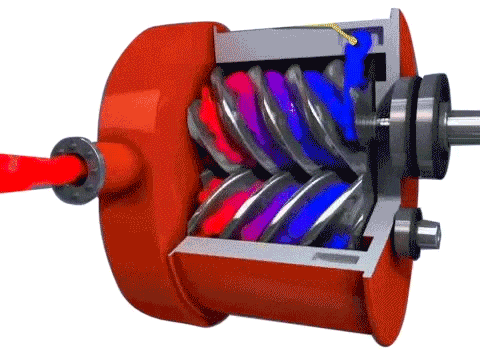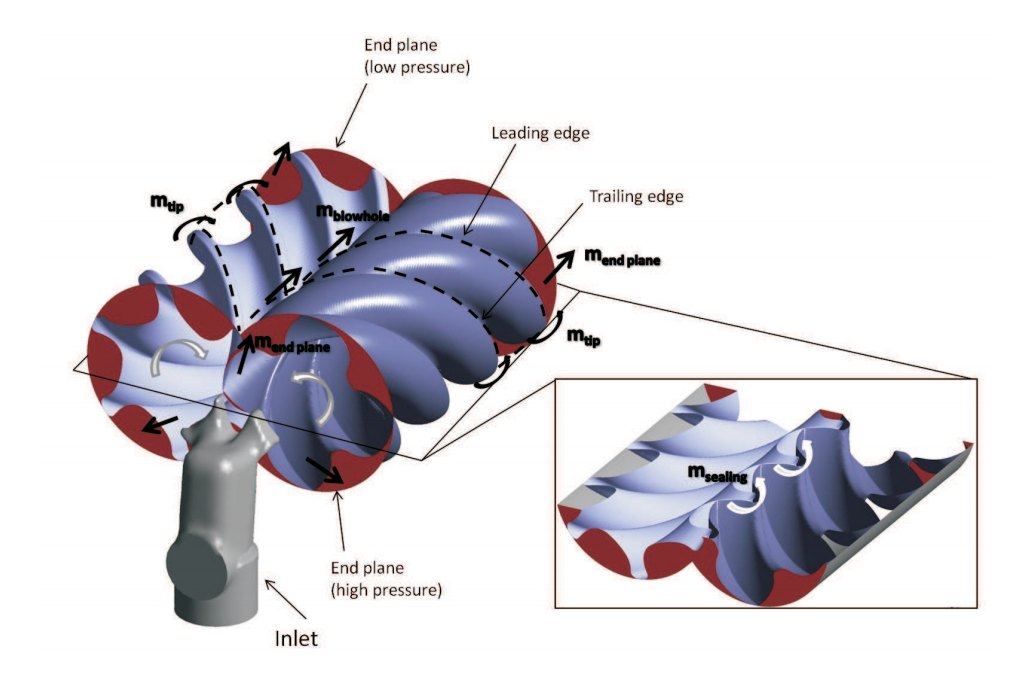Probleemstelling:
Compressed air is essential to many industrial applications, to such an extent that it is considered the fourth utility after electricity, natural gas and water. Very often, screw compressors produce this compressed air, as they offer advantages over other type of positive displacement compressors in terms of compactness, high efficiency over a large operating range and a high reliability. Atlas Copco is an important manufacturer of these compressors which consist of a pair of meshing helical rotors enclosed by a casing. The meshing motion creates a volume between the rotors and the casing which decreases in size and realizes the compression. Figure 1 shows the basic action.

Figure 1: Basic construction of a screw compressor.
Imperative for the efficiency of such a machine are the gaps and corresponding leakages. These gaps are shown in Figure 2. To keep the leakage flow to a minimum the size of these gaps should be as small as possible (orders tens of microns). In addition, the speed of the rotors is very high and there is an important increase in temperature, when pressurizing the air.

Figure 2: Leakage paths in a screw compressor.
One way to cope with these issues is the introduction of oil in the air flow. The injected oil is very effective in sealing the gaps mentioned above, as these gaps are mostly long narrow clearances. This measure increases the volumetric and hence the total efficiency. Besides sealing and lubrication, it allows for virtual total temperature control, increased pressure ratio, simpler design, lower rotational speed and noise reduction.
Modelling screw compressors with the use of computational fluid dynamics (CFD) promises to enrich the general knowledge and understanding of these machines. This leads to improving the efficiency with the ultimate goal of lowering the energy use from both an environmental and economical point of view. This has been successfully applied to oil-free screw compressors. However, the CFD modelling of the air and the oil film in oil-injected screw compressor is much less evident. Besides the complex geometry and narrow gaps, the presence of two phases with vastly different density and intense interaction between the two-phases make it a challenging task.

Figure 3: Mesh of female and male rotor.